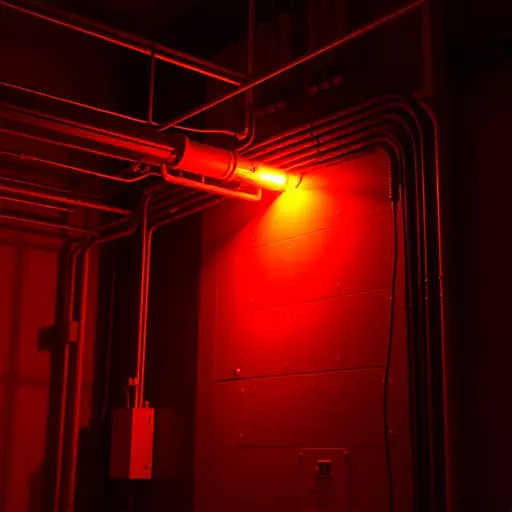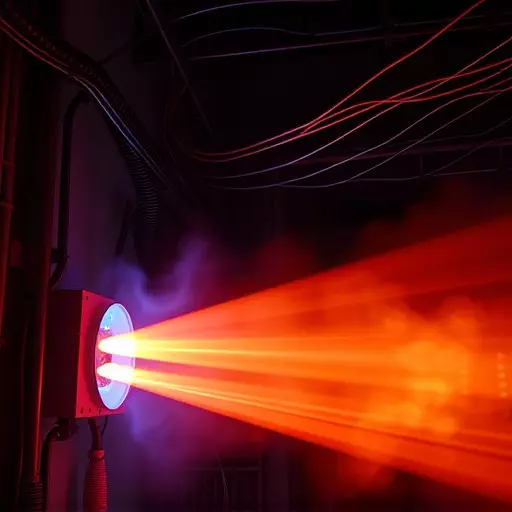The Arc Flash Study Process is a critical component of electrical hazard analysis, focusing on identifying and mitigating risks from arc flash events. This involves simulating fault scenarios to calculate arcing current, voltage, and energy release, guiding the selection of protective devices and PPE programs. Adhering to safety standards like NFPA 70E ensures a comprehensive approach that balances personnel protection with operational efficiency. By understanding electrical hazards and implementing tailored safety protocols based on risk assessments, organizations can significantly enhance arc flash safety in industrial settings.
“In the realm of electrical safety, understanding the intricate arc flash study process is paramount. This comprehensive guide delves into the critical aspects of electrical hazard analysis, offering a detailed overview for professionals. By identifying potential risks and unraveling industry safety standards, we provide practical strategies to enhance arc flash safety. From compliance to risk mitigation, this article equips readers with essential insights, ensuring a safer working environment in today’s industrial landscape.”
- Understanding Arc Flash Study Process: A Comprehensive Overview
- Identifying Electrical Hazards: Key Components in Arc Flash Analysis
- Unraveling Safety Standards: Ensuring Compliance and Mitigating Risks
- Implementing Effective Solutions: Strategies for Enhanced Arc Flash Safety
Understanding Arc Flash Study Process: A Comprehensive Overview
The Arc Flash Study Process is a critical component of electrical hazard analysis, designed to identify and mitigate risks associated with arc flash events. This process involves a thorough evaluation of an electrical system to determine potential arc flash hazards and develop strategies to minimize their impact. By employing advanced calculations and adherence to arc flash safety standards, such as those set by the National Fire Protection Association (NFPA), facilities can ensure the safety of personnel while maintaining operational efficiency.
A comprehensive arc flash study begins with a detailed review of the electrical distribution system, including equipment ratings, configurations, and interconnections. It then proceeds to simulate potential fault scenarios to calculate arcing current, voltage, and energy release. These data are crucial in selecting appropriate protective devices, such as circuit breakers or fuses, and designing effective personal protective equipment (PPE) programs. The study also considers environmental factors and operational practices to ensure a holistic approach to arc flash safety.
Identifying Electrical Hazards: Key Components in Arc Flash Analysis
Identifying electrical hazards is a critical step in the arc flash study process. It involves meticulously evaluating every component within an electrical system to assess potential risks. This includes examining equipment, wiring, circuit protection devices, and even human factors that could contribute to arcing events. By understanding these hazards, professionals can then apply relevant arc flash safety standards to ensure compliance and mitigate dangers.
Key components of this analysis include conducting thorough inspections, gathering detailed data on system configurations, and employing specialized software tools for risk assessment. This comprehensive approach allows for a precise determination of incident energy levels and appropriate personal protective equipment (PPE) requirements, thereby enhancing workplace safety in environments where electrical hazards are prevalent.
Unraveling Safety Standards: Ensuring Compliance and Mitigating Risks
Unraveling Safety Standards is a critical step in the arc flash study process, as it ensures compliance with industry regulations and mitigates potential risks associated with electrical hazards. This involves a thorough understanding of relevant standards such as NFPA 70E, IEC 61508, and local codes, which provide guidelines for safe electrical systems design, installation, and operation. By aligning with these arc flash safety standards, organizations can create a robust framework to protect workers from the severe consequences of arc flashes, including burns and blindness.
Compliance goes beyond mere adherence to regulations; it requires a proactive approach to risk management. Conducting a comprehensive electrical hazard analysis is essential to identifying potential arc flash points, assessing risks, and implementing appropriate control measures. This analysis involves evaluating equipment ratings, working distances, and protective gear requirements, leading to the development of effective safety protocols tailored to specific workplace conditions.
Implementing Effective Solutions: Strategies for Enhanced Arc Flash Safety
Implementing effective solutions is a critical step in enhancing arc flash safety within industrial settings. The arc flash study process involves a comprehensive electrical hazard analysis, which identifies potential risks associated with electrical systems and equipment. By meticulously examining circuit configurations, component vulnerabilities, and energy release potential, facilities can pinpoint areas necessitating improved safety measures.
Adhering to established arc flash safety standards guides this process. These standards provide critical guidelines for risk assessment, personal protective equipment (PPE) selection, and engineering controls. Incorporating appropriate PPE, such as arc flash-rated clothing, along with implementing physical barriers and proper labeling, significantly mitigates the risks associated with arc flashes.


